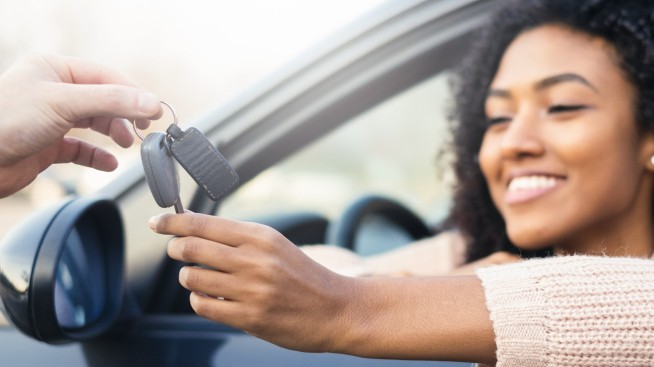How long does it take to buy a car?

If you are buying your first car or if it has been a while since you last bought a car, you may be unfamiliar with the processes involved. While you might not want to rush a purchase, you probably don't want to drag it out either. Fortunately, there are some actions you can take to keep the buying process quick.
So, how long does buying a car take? This ultimately depends on how you approach the buying process and what you are looking to get out of it overall. Some might prefer to do a lot of market research and negotiating with dealers before making a decision. These are tactics that may work in the buyer's favor but can lengthen the buying process. With this method, it might take you several weeks to nail down a deal.
On the other hand, a buyer who has already picked out a vehicle and is ready to get the ball rolling may find the buying process to be short and simple. You may be able to get your new car in just a few hours.
Generally speaking, however, there are certain steps you may wish to factor into your vehicle search and buying process to get an overall idea about how long it is likely to take. We discuss these steps below, as well as some tips for speeding up the process and avoiding common causes for delays.
Steps to expect when buying a car
The following list of steps in the car-buying process represents a general guide. The entire process, from start to finish, will vary by person.
Researching vehicles of interest
The first step in your car-buying journey may include a period of time in which you browse the Internet looking for the right car. This time may be spent browsing for certain features and styles that you like, as well as for vehicles that fall within your price range. You may also want to consider new and used options and determine which is right for you before you step foot on a lot. If you already know what type of car you're looking for, this phase may not take very long. Otherwise, you might expect to spend a few days browsing around until you get a general idea of what you're looking for.
Visiting dealerships to browse or shop online
Once you have an idea of the kind of car you're looking for, the next step is to visit various dealerships in your area to browse their inventory. Once there, you may want to engage with the salespeople to figure out if they have what you're looking for or if they have suggestions for similar vehicles in your price range. You may also want to spend some time test driving vehicles of interest to get a better feel for them and checking to make sure they come equipped with the features you're looking for. This part of the car buying process may take mere days or weeks, depending on whether the dealerships you visit have what you are looking for, or if part of your process involves getting quotes from different dealers for comparison or negotiating purposes.
Another option when looking for a new car can include shopping online. This can eliminate the need to go from dealership to dealership, which some may dread. While you may not want to complete all the steps online that come along with buying a car, it can help you research what you want and don’t want. Browsing online can also help you make a well-educated decision when it comes to your next car purchase. Online car shopping is convenient for those who don’t have time to go in person or are just looking for more convenient options.
Financing and other paperwork
Once you have selected the vehicle you want, next comes discussions on financing. You may opt to finance with the dealer that you are buying the car from or a third-party auto lender. Another option can be financing with your financial institution by applying online. During this stage of the buying process the lender you choose gathers your information, runs a credit check, and comes up with a loan offer. Once this is complete, signing the associated paperwork may be relatively quick and straightforward.
Can you take a car home the same day you buy it?
Once you have purchased your vehicle, you may be able to drive it off the lot on the same day so long as your financing paperwork clears, and you have proof of insurance. Even if you have been pre-approved for an auto loan, you may have to wait until you receive formal approval before you can leave with your new vehicle. One way to ensure you can take your car home the same day you buy it is by applying online ahead of time. Once you know the specific car you’re purchasing, and where you’ll get it from, you may be able to apply online and take the approval to the dealership. With Chase Auto Finance & Drive, your approval is sent electronically to the dealership making this process even easier! This type of financing may only be available at specific dealerships so check with your lender on their process.
Common causes of delays when buying a car
Some common causes for delays in the car buying process include the following:
- Financial hiccups. The most common cause for delays in the process involves financial hiccups. Having poor credit or other issues on your credit report may cause a setback when it comes to securing financing. If this happens, you may need to pursue other lenders or choose another vehicle in your price range. Visit Chase Credit Journey to find your credit score today.
- Long browsing times. Buyers who do not have a strong inclination toward a certain type of vehicle may end up taking longer to browse. This is especially true for buyers who do not spend time researching before browsing. Some may not mind taking their time browsing vehicles in person, but if you'd like to speed up the process, you may want to research vehicles online in advance.
- Obtaining quotes and negotiating with dealers. Some buyers prioritize getting the best deal they possibly can, and this typically requires shopping around at multiple locations. While obtaining quotes and negotiating with various dealers can save money in the long run, this tactic may lengthen the buying process.
What should you bring into the dealership?
If you would like to avoid unnecessary delays, there are a few actions you can take to ensure a speedier process. When visiting a dealership, you can call beforehand to make sure you have all the documents they may request. Some of those documents can be:
- Your driver's license
- Your proof of car insurance
- Your payment method and any relevant loan documents
- Your old vehicle's plates and title, if applicable
Want even more help when buying a car? Check out the Chase Auto Education site for more information.



